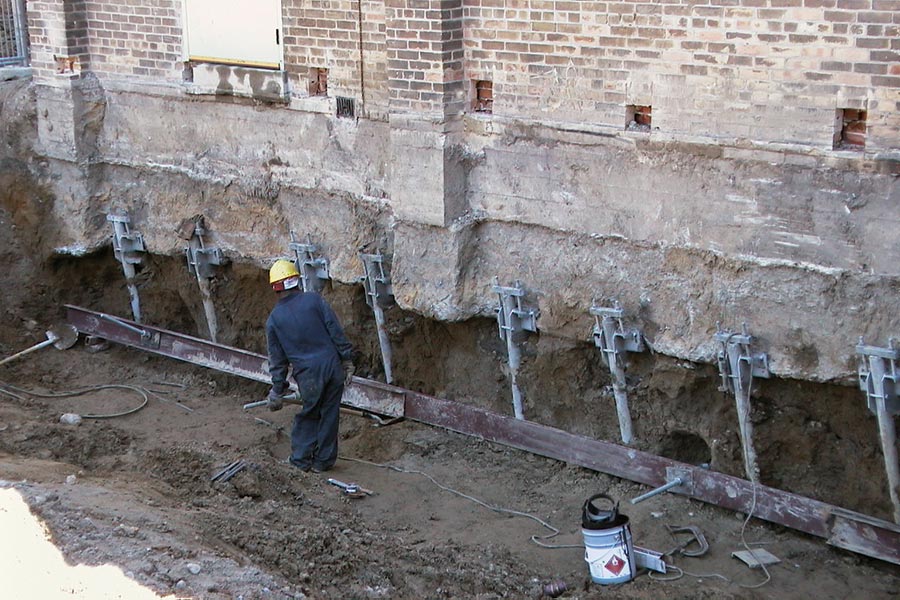The foundations of the buildings and homes that we use on a day-to-day basis are often constructed using steel foundations. Steel is a strong and sturdy material that can withstand extreme weather conditions as well as take the weight of the human body and any other objects placed on it. Unfortunately, however, even with this durability, steel foundations eventually wear out and have to be repaired or replaced. Foundation repairs and replacements aren’t cheap and the longer it takes you to get your foundations repaired, the more expensive the repairs will turn out to be.
If you live in an area that experiences any type of heavy rainfall, the chances are you’ll need foundation repairs from time to time. Even if your home doesn’t receive too much rainfall, the ground can still erode and deposit excess water underneath your home. In some cases, this excess water can cause structural damage and cause your foundation to weaken over time. If the underlying soil beneath your foundation has pockets and crevices where it can collect moisture and turn into a bad environment for your foundation, then it can weaken even further. Foundation problems are extremely common after major storms or when the soil beneath is very wet.
As mentioned earlier, the foundation underpinning may begin to settle after even minor storms or when the soil is very wet. There are many different reasons why the soil may settle and if left unchecked, these issues can quickly grow into significant problems that can cost you thousands of dollars to repair. One of the most common reasons for soil settling is because of the way in which the house is built. For example, a house with poor construction would have its floor plan built on uneven surfaces that encourage soil consolidation around the foundation. A house with good construction, on the other hand, will have the floors placed so that they are parallel to each other and so the soil will naturally settle around them instead.
Another issue that can cause foundations to settle is the slippage of the foundation slabs. Slipping of any kind is problematic, as it can result in damage to the floor, walls, and other areas of the house, and it can also compromise the structural integrity of the entire building. Foundation weaknesses that are caused by slippage can often be solved by fitting more stable floor slabs or wall supports and by locating the foundation footer drains and main sewer line to take care of the problem.
Many homeowners choose to add extra stability to their foundations by using helical piers. Helical piers are long metal beams that run parallel to the ground on which you lay down the foundation. Because the piers themselves are perpendicular to the walls and floor, they provide a great deal of added stability for the structure. The added stability is particularly important in older homes, where the structure might have suffered more wear and tear over the years and in areas where it has been subjected to more moisture and other influences.
One of the most common methods of adding additional stability to your home is by using a “slip-resistant” foundation underpinning system. These systems are typically comprised of polyethylene fibers or a similar material that has excellent electrical and mechanical properties. These fibers are highly resistant to degradation, but are not completely waterproof. This means that although they can prevent water from entering the structure, they can also encourage water to enter in large amounts, damaging parts of the floor, walls, and roof. In order to improve the moisture resistance of the system, most manufacturers will recommend that the installation be done using epoxy glue.
A second option available for those hoping to avoid the costly foundation settlement issue is to improve the area surrounding the foundation. This method can also work well, but it is relatively expensive. One effective method of improving the bay area around a house is to use a polystyrene foam product. Manufacturers often sell these products in varying densities, which allows you to effectively increase the area of coverage. However, it is important to realize that the densities of the foam itself will not affect the stability of the entire foundation. For this reason, it is more effective to purchase a densities range of six to ten pounds per square foot, which will allow you to create a firmer footing and increase the overall stability of the entire area.
As an added bonus, most manufacturers of basement waterproofing systems also offer basement sound proofing as a complimentary service. Although it cannot solve every foundation problem, this type of service can significantly reduce the amount of time it takes for water to enter a home. Unfortunately, many homeowners don’t realize that it can be expensive to perform this service on their own. Fortunately, there are many quality companies that can perform soundproofing services for a reasonable price. By combining these services with foundation cracking inspections and sealing, you can reduce the amount of time needed to resolve foundation problems, and prevent them from becoming worse.

